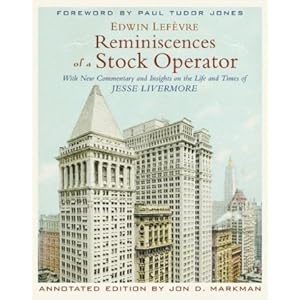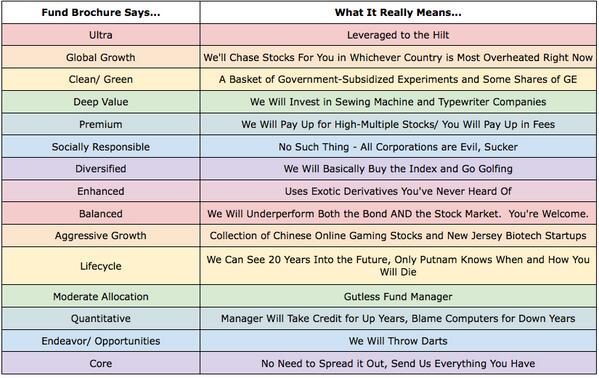Do you know your Art of Trading
Do you have a trading plan
Do you think in terms of probabilities
Do you know which time frame fits your psychology
Do you cut your losses
Do you define your Risk
Do you add to your losing Position (more…)
Archives of “February 2019” month
rssAvoid complexity in your trading. Do not use many too indicators simultaneously.

Great Strategy For Traders
 In Reminiscences of a Stock Operator there is a scene where a tout runs up the the Commodore and says buy such and such stock. The Commodore phones his broker and says sell 10K, then says sell 10 more. Tout goes, “What are you doing, I said Buy!, not sell”. Commodore says, I need to see how the market is taking the orders.
In Reminiscences of a Stock Operator there is a scene where a tout runs up the the Commodore and says buy such and such stock. The Commodore phones his broker and says sell 10K, then says sell 10 more. Tout goes, “What are you doing, I said Buy!, not sell”. Commodore says, I need to see how the market is taking the orders.
Does it make a difference how your orders are being filled? Are they gobbled as price passes thru as if you weren’t even there, or does it nibble nibble at the order and partially fill, or does it touch and fill, or does it sit on price touch, touch, not fill, then fill? Do these variations even make a predictive difference in what happens in the near future?
Decoding Mutual Fund Brochures

Rules for Bear Market
 1. Good news in a bear market is like smoke in the breeze (i.e., soon dispersed). Don’t buy into upgrades or analyst recommendations. Analyst “upgrades” or recommendations can kill you.Every person reading this has access to some kind of trading platform, trading tools or systems that afford instant access to the financial markets. Good news like upgrades in bear markets typically has about five minutes of fame.
1. Good news in a bear market is like smoke in the breeze (i.e., soon dispersed). Don’t buy into upgrades or analyst recommendations. Analyst “upgrades” or recommendations can kill you.Every person reading this has access to some kind of trading platform, trading tools or systems that afford instant access to the financial markets. Good news like upgrades in bear markets typically has about five minutes of fame.
2. Bear markets are not a time to learn how to “day trade” in an effort to recoup losses (no matter how many times you hear that “this is a traders’ market”).
3. Accumulation days (there may be three or more in a row) are shorting opportunities, but resist being aggressive until the S&P 500 shows a 3- and 5-day moving average bearish cross. (Remember that it’s 50% market, 25% sector and 25% stock as far as direction, but some could argue in markets it’s 75% index, 15% sector and 10% stock.)
4. Chart patterns (unlike ice cream) come in just two flavors: continuations and reversals. Reversal patterns mostly form in weak trends. If the trend that the market or stock you are watching has been strong, then chances are that any pause is just a consolidation before the next leg down.
5. There is no such thing as “safe sectors.” Sure, each bear market brings sector rotation. But make sure if you are playing this game that you don’t have the flexibility of wood. And when the music stops, quickly find a chair!
That is, you must keep a flexible mindset so that you are able to change with the markets. The best traders are those who are nimble and approach the markets without bias.
6. Your stop-losses are YOUR stop-losses. The pain of being down 8% in a bull market is no different than being 8% wrong in a bear. If your risk tolerance requires you stopping out at 8%, then be consistent in any market you trade, but trade “with the primary trend.”
It takes greater emotional balance to trade a bear than a bull. So, always manage your risk — just remember that, in the markets, your money is always at risk.
Great traders manage emotions and risk. This makes them great. YOU know your risk tolerance and YOU control what happens between the “keyboard and chair.”
7. Bear markets are generally slow-moving affairs. However, stocks in bear markets can move much faster than you think (hence the reason that volatility rises drastically). But the “time” we spend in a bear is what everyone needs to keep in perspective. Bear markets last much longer than most are willing to wait. (more…)
Today's Intraday SMS ,Just See power of chart

-Today morning ,I had written Support for NF at 5032-4985 level.
-Made low of 5053 & taken U-turn.
First SMS :Now NF @ 5068.Crossover above 5077 will take to 5112-5127 level.Above 5077….Pls for God sake dont remain short in any stock.
2nd SMS :From 11:00 till 2:00 one side move and in last 35 minutes watch explosive rally.
3rd SMS :Now Bank Nifty 9548 ,Once crosses 9555 will take to 9583 & there after 9668-9680 level..Buy for overnight.
101% ,No Magic-No Miracle :Only power of chart.Just see ,What had happened after our recommendations.
 Yes ,Its PARTY Time for our Subscribers.
Yes ,Its PARTY Time for our Subscribers.
To dream anything that you want to dream. That’s the beauty of the human mind. To do anything that you want to do. That is the strength of the human will. To trust yourself to test your limits. That is the courage to succeed. ~
Updated at 16:24/5th May/Baroda
Mental Models -Video
Sense & Nonsense in corporate finance.

Jesse Livermore with Edwin Lefevre, dated circa 1922
 What follows is a never before published “interview” with Jesse Livermore.
What follows is a never before published “interview” with Jesse Livermore.
Conducted by Edwin Lefevre, dated circa 1922, this “interview” reveals great insights into the mind of the famous trader. As we will see, the wisdom imparted here could change our entire perspective on the speculative game we love and enjoy. It might even change our lives. I took the liberty of editing it due to its length.
Lefevre: Hello Mr Livermore. Thank you for taking the time to conduct this series of interviews with me. It is my understanding that you do not grant many interviews, so I am honored.
Livermore: You are very welcome. I appreciate the respect but you do not have to address me as Mr. Jesse, or my nickname, the boy plunger, will suffice.
Lefevre: And where did you get the name boy plunger?
Livermore: It was during the early days when I was trading small lots in the bucket shops, where the man who traded in twenty shares at a clip was suspected of being J.P. Morgan traveling incognito. I didn’t have a following. I kept my business to myself. As it was, it did not take long for the bucket shops to get sore on me for beating them. I’d walk in and plank down my margin, but they’d look at it without making a move to grab it. They’d say nothing doing. That is when they started calling me the boy plunger. I had to move from shop to shop, even to the point of changing my name. I couldn’t put trades on without getting cheated on the quotes. This was in Boston, so I then moved to where the real action was, to New York. I was 21 at the time.
Lefevre: Were you making money? (more…)
Your Comfort Zone
High achievers (in life and in the market) frequently step outside their comfort zone. That’s the way they learn and make progress. At the same time, they also expect to fail (more often than not), but do not see failure or mistakes they make as problems, but as educational experiences.
The natural instinct of all of us is to seek safety and shelter, unfortunately at the exact same time when we should be aggressive and risk tolerant. Those who do well in the market understand this natural human tendency and they consistently work against it when others are doing the exact opposite.
The key for today is to first understand what your comfort zone is and then take a step outside of it. Remember, the market doesn’t reward comfort and decisions that “feel” good to make. That’s the law of nature and it is true of this market like any other.
